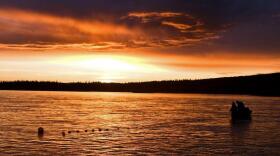United States Secretary of the Interior Deb Haaland has finalized a decision to maintain protections for 28 million acres of wilderness lands across Alaska, known as “D-1” lands.
It’s a move widely supported by tribal and conservation groups across the state, who say removing the protection would directly threaten Indigenous ways of living and critical fish and wildlife habitat.
The decision follows an extensive environmental impact analysis released in June by the U.S. Bureau of Land Management (BLM) that recommended that the Secretary of the Interior take “no action” regarding the protected lands. This leaves the lands off-limits to potential mineral exploration and development.
The lands were set aside following passage of the 1971 Alaska Native Claims Settlement Act (ANCSA) and have been locked up ever since.
The lion’s share of the D-1 lands is concentrated in the western part of the state, with millions of acres lining the Norton Sound region and extending to border large portions of the Yukon and Kuskokwim river systems.
In a statement released Aug. 27, the U.S. Department of Interior said that the decision comes in response to an unlawful move made in 2021 during the final days of the Trump Administration, when then-Interior Secretary David Bernhardt signed orders to lift the protections on the land.
"Tribal consultation must be treated as a requirement – not an option – when the federal government is making decisions that could irrevocably affect tribal communities," Haaland is quoted as saying in the statement.
In addition to negatively impacting subsistence hunting and fishing activities, the BLM’s analysis found that as many as 117 communities could see the loss of a federal subsistence priority on some lands if protections were lifted and the state were to gain ownership.
The BLM held 19 community meetings throughout the state and received more than 15,000 comments from the public on the proposed changes. Over the course of the environmental review process, more than half of the state’s 227 federally recognized tribes expressed support for maintaining protections.
According to a press release from conservation group SalmonState, 183 Alaska Native communities are located within 50 miles of a D-1 land area, and half of all the D-1 lands in question lie within the range of the Western Arctic Caribou Herd.
The state of Alaska, as well as Sens. Lisa Murkowski and Dan Sullivan have strongly opposed maintaining D-1 protections. In a statement following the release of the BLM’s analysis, Sullivan claimed that Alaska Native communities would actually be harmed by the protections, being “denied access to gravel resources to build out local village infrastructure.”
The public land order finalizing the Aug. 27 decision will be published in the Federal Register later this week.








